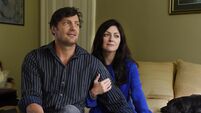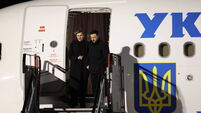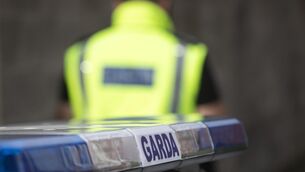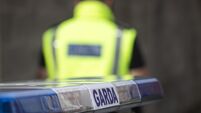One man’s Titanic task re-mastered
Now the last photographs of the doomed Titanic taken by one of Ireland’s greatest documentary photographers have been digitally re-mastered to mark the 100th anniversary of her sinking.
Fr Eddie O’Donnell, the Jesuit priest who discovered Fr Frank Browne’s remarkable Titanic images amongst a vast collection of some 42,000 negatives, said the experts who worked on them have described them as the best pictures of Titanic the world will have ever seen.
Fr Browne’s Titanic Album will be launched in Cobh tonight — the Titanic’s last port of call on her ill-fated maiden voyage in April 1912.
Frank Browne was born into a wealthy Cork family in 1880.
His grandfather, James Hegarty, was Lord Mayor, and his uncle, Robert Browne, was Bishop of Cloyne for 41 years.
When he left school in 1897, he set out on a tour of Europe, and began taking his first photographs with a new camera given to him by his uncle.
He would continue taking photographs until shortly before his death in 1960 — a collection which provides a valuable chronicle of life in the first part of the 20th century.
His uncle Robert sent him a ticket for the first legs of the maiden voyage of the Titanic — from Southampton to Cherbourg and then on to Queenstown (Cobh).
While on board, he took hundreds of photographs of the vessel and its passengers. He swam in its pool, and exercised in its gym.
He was also befriended by an American millionaire who offered to pay his way for the entire voyage to New York.
Browne sent a Marconi telegram to his superior from the ship while it was in Southampton, telling him of the offer.
But when Titanic anchored off Roche’s Point in Cork to collect its Irish passengers from Queenstown, he received a reply cable with the strict instruction: “Get off that ship — Provincial”.
As well as the enhanced Titanic photos, the new book, which was first published in 1997, features a newly discovered article written by Fr Browne for the Cork Constitution newspaper the day after he got off the vessel.
He said Titanic was so stable, guests weren’t sure if it was sailing or not. He recounts a discussion between guests in the first class dining room who were debating whether or not the ship was moored at Cherbourg or sailing.
A waiter told them: “Gentlemen, you’ll be pleased to know we’ve been an hour and a half at sea.”
Afterwards, Browne’s Titanic photographs appeared on the front pages of newspapers around the world.
He had taken the last picture of Captain Smith and the only one ever taken in the doomed vessel’s Marconi room.
Oscar-winning director James Cameron researched the photos for his 1997 blockbuster Titanic. He included a scene of a boy on deck playing with a spinning top as a homage to an image captured by Fr Browne.
In 1915, Browne was ordained a priest by his uncle Robert and the following year he volunteered for service as a chaplain to the Irish Guards, serving with them at the Western Front.
Fr Browne’s vast collection lay forgotten for 25 years after his death until they were discovered in a Dublin basement, in a large metal trunk in 1986 by Fr O’Donnell.
He brought them to the attention of the features editor of the London Sunday Times who dubbed them “the photographic equivalent to the discovery of the Dead Sea Scrolls”.
The book, which includes a foreword by Robert Ballard, the man who discovered the wreck, will be launched at the Cobh Heritage Centre this evening by Una Reilly, Chair of the Belfast Titanic Society.
Fr Browne’s Titanic Album: A Passenger’s Photographs and Personal Memoir, edited by Fr O’Donnell, is published by Messenger Publications, priced €30.
Listen to a wide-ranging interview here with Fr Eddie O’Donnell SJ, as he recounts the fascinating story of how he discovered the remarkable Fr Browne Collection, and the tragic story behind one of Fr Browne's most famous Titanic photographs, which was recreated by director James Cameron in his Hollywood blockbuster, Titanic.












